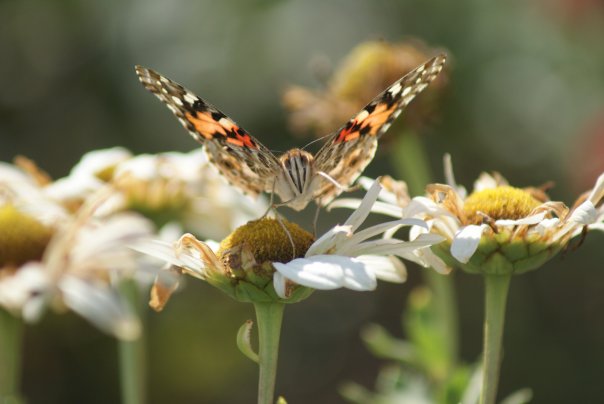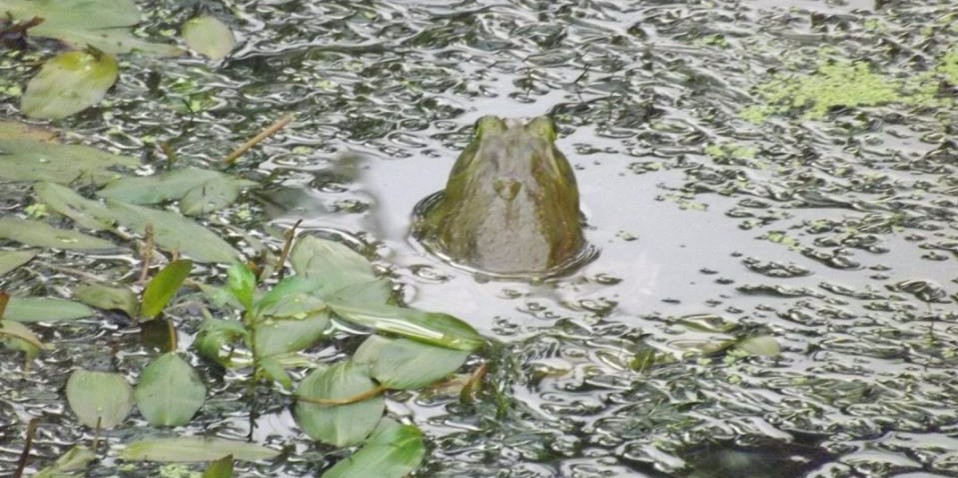Citizen Science is how the public, or citizen scientists, get involved in scientific research. There are so many ways to participate, some as easy as monitoring wildlife in your own backyard. Some projects bring together data from all over the world to look at patterns on a global scale, other projects are local efforts to monitor and improve biodiversity. Summer is the best time to participate, especially for families with children!
Here are some suggestions for great ways for you to get involved with citizen science programs. You may also check out our list of citizen science programs.
1. Submit your sightings or photos
-

photo credit Georgia Eldeib
Are birds your thing? For bird data, all roads lead to eBird, a comprehensive database of bird sightings across the U.S. with an interactive map. You can submit incidental sightings, and if you really like birding, eBird allows you to track your sightings and share them with birder friends. Scientists at the Field Museum use eBird, and you can explore the data to find the best places to look for birds! Check out this birding map of downtown Chicago.
-

photo credit Georgia Eldeib
The insects are abundant in the summer, and there are many insect projects that welcome your observations! If you like to take photos, Bumble Bee Watch needs your photos of bumble bees. You can report your butterfly observations to eButterfly, a large database of butterfly sightings. Have you started hearing cicadas lately? If you see cicadas, let them know at Cicada Watch, where they are tracking the emergence of the many broods and species of cicadas, some of which only emerge every 17 years!

If you have a good squirrel story, or want to submit a photo or sighting, visit Project Squirrel. If you see any herps (frogs, toads, salamanders, lizards, etc.), submit your observations to the Herpetology Education and Research Project. Many of these projects, including iNaturalist, have mobile apps to make things even easier!
2. Monitor a Site
-

photo credit Georgia Eldeib
If you want to put in a little more effort, you can sign up to monitor chosen sites for various species of plants and animals. If you have a pond on your property, you can monitor dragonflies this summer with Dragonfly Pond Watch. City dwellers can monitor sites for birds using Celebrate Urban Birds. Have you seen any birds nesting around your home? Nest Watch collects data on nesting birds, but requires some training to avoid disturbing the birds. Project Budburst accepts data describing the timing of buds and flowers on plants in your yard or in your local park.
3. Help From Your Sofa
Do you want to help from the comfort of your home? The North American Bird Phenology Program has a collection of bird migration cards from pre-internet days that need to be transcribed into the database. Notes From Nature needs help transcribing old museum records as well. Help the Field Museum measure photos of microscopic plants at Microplants. It’s very easy, and a great way to contribute without getting sweaty and mosquito-bitten!
Upcoming Projects and Events
Help Monarch Watch collect milkweed seeds for restoration projects. Many species of milkweed are blooming now, and seeds will come soon! See these guidelines for collecting seeds in your area. Monarch Watch will send free milkweed seeds for your own larger restoration projects. Monarch Watch is also a great resource for rearing and tagging monarchs that you find on your milkweed.
Hummingbirds! See this Chicago Tribune article for hummingbird-related events in the Chicago region and get out to see these amazing birds in action! Also bird-related, every Wednesday from 9 a.m. to 12 p.m. at Sagawau Environmental Learning Center in Lemont, IL, you can check out the bird banding station and see how field biologists are working to track and conserve our migratory bird populations!
-

photo credit Georgia Eldeib
A more comprehensive list of citizen science projects can be found here.
